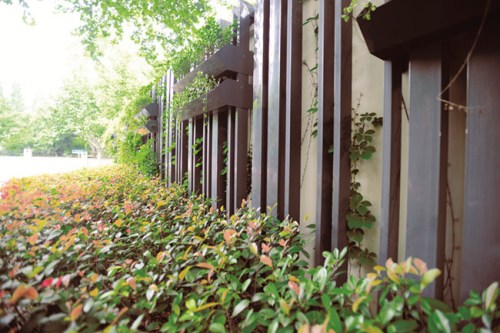A little sprucing up goes a long way on Wukang Road
 0 Comment(s)
0 Comment(s) Print
Print E-mail Shanghai Daily, June 10, 2015
E-mail Shanghai Daily, June 10, 2015

"Wukang Road wasn't very attractive before the 2007 project," says Jiao Tong University professor Wang Lin, who was vice director of the Planning Bureau's Historic Conservation Department when participating in the project.
"Just like any of Shanghai's historic roads, it was quiet and with stories to tell, but it looked lonely and decayed. Few would have noticed it or wanted to stay here," Wang says. "Many people knew about the Wukang Building (Normandie Apartments) but few were aware of Wukang Road."
She says the Wukang Road project resulted from the city's groundbreaking 2005 plan to establish 12 historical areas and 144 historical streets in downtown Shanghai. The 144 streets include 64 that will never be widened in order to preserve their original look and the old buildings flanking the roads.
As one of the 64, Wukang Road was selected for the first revamp.
"We wanted to pick a simple residential street rather than a complicated commercial one for this 'experiment'," says Guan Yetong, who played an important role in the project as director of Xuhui District Urban Planning Bureau.
"Finally we chose Wukang Road because it wasn't too long and it's basically neat with very simple business. And it was also an important street, like a fish bone for the whole neighborhood."
Tongji University professor Sha Yongjie, a Harvard University graduate, was commissioned as chief planner for the project.
Wang says the project included many small details, such as adding trees and replacing dustbins. This required the involvement of more than 10 municipal, district or community-level governments.
"This is why we hired Sha," Wang says. "We needed one person with a background in architecture and urban design to supervise everything."
With a limited budget, Sha's team paid close attention to restoring the crossroads of Wukang Road and several historical streets as well as surrounding walls and gateways to residential areas. They also removed ugly shop signs and condom vending machines that were in front of historic buildings.
The modern facades of some 1980s buildings were replaced with more natural materials to go well with the idyllic style of this neighborhood.
"With professional guidance from myself and fellow architects, the restoration has had a great impact without costing too much. This helped us gain the trust and support of residents," Sha says.
"Wukang Road has always been a quiet road. We have made some small, proper changes and luckily few mistakes. We did a small thing, but it was well-done," says Sha, adding that the project has won a state-level award for excellence in urban planning.
Wang also can't help put smile when speaking about the impact of the project.
"Wukang Road looks more beautiful than ever, but people think nothing has been done here," Wang admits, chuckling. "Then it seems as though something has been done to improve the atmosphere of the road, but without 'upside down changes,' which we historical preservationists fear most."
Shanghai entered its "golden era" in the 1920s and early 1930s, which shaped the urban scene of a city once known as "Paris of the East."
Architectural scholars believe two regions best represent this metropolis in the Far East — the Bund as the city's economic engine and the western area of the French Concession as an upscale residential community.
After completing two series about the Bund, I'm moving westward. Like the local government, I also choose Wukang Road as the starting point to explore the old "new French Concession."







Go to Forum >>0 Comment(s)